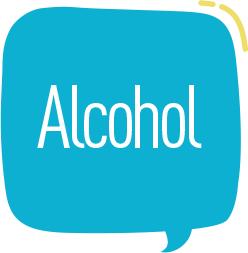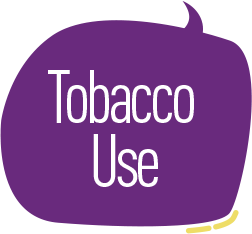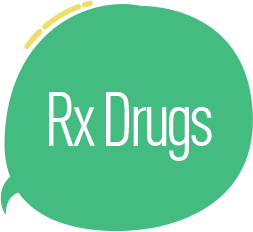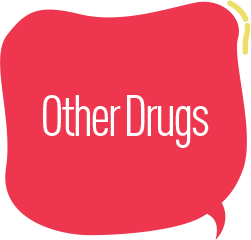The public health and social impacts of alcohol are not always fully recognized. In North America, alcohol is the second leading risk factor for all premature mortality and burden of disease (i.e., the impact of illness and injuries across the lifespan; Said & Wegman, 2007). Additionally, alcohol accounts for almost four times the negative public health impact of all illicit drugs combined (Rehm et al., 2006). Furthermore, the impact of alcohol is disproportionately slanted toward younger persons, primarily because alcohol has many acute impacts such as crashes, violence, falls, and suicides that can result in lifelong disabilities or even early death (Rehm et al., 2006). These consequences are not limited to those with alcohol use disorders; all drinkers are susceptible, especially at times of drinking to impairment, which is a common style of consumption for underage drinkers (SAMHSA, 2008). Based on economic models developed by the Pacific Institute for Research and Evaluation, the cost of underage drinking in Erie County is about $170 million each year. Thus, the rationale for an underage drinking initiative is overwhelming.
Research
The Px2010 initiative is fully informed by the relevant research literature on evidence-based practices, in particular:
- Reducing Underage Drinking: A Collective Responsibility (a 2004 publication of the National Academies of Sciences)
- The Substance Abuse and Mental Health Services Administration (SAMHSA) Center for Substance Abuse Prevention guidelines for environmental prevention, and
- The New York State Office of Alcoholism and Substance Abuse Services (OASAS) underage drinking strategies. The Px2010 initiative utilizes these evidence-based approaches in an informed, sophisticated, and innovative manner.
Resources
Px2010 can be implemented using a variety of resource streams. The Px20 group has made a commitment to this initiative so that it will be a focus of ongoing prevention activities. The Px20 member agencies regularly compete for and receive grant funding to support prevention initiatives. One new aspect of the Px2010 campaign is that it is a system-wide collaboration. The coordinated and focused efforts of Px2010 should be an especially competitive project for grant resources when coupled with the larger-scale grant success of Dr. Wieczorek. Grant funders are often seeking coordinated campaigns that have the potential for a truly synergistic impact. The inclusion of a research team will further enhance the potential for funding, as the ability to document program impact is widely sought after. A plan for outreach to private foundations and government agencies for funds to support the full Px2010 program and data collection process will be implemented in the first quarter of 2010; sufficient resources are, however, currently in place to allow the Px2010 initiative to move forward at this time.
Goals
Px2010 is primarily an environmental prevention approach, the goals of which are to:
- Increase policies directed at reducing underage drinking
- Increase enforcement of underage drinking laws, including adult party hosts, underage alcohol purchases, underage drinking at public events, and drinking and driving by persons under the age of 21
- Change social norms towards underage drinking so that the public recognizes its substantial negative impact on society and has an awareness regarding the Px2010 campaign
- Increase the average age of first alcohol use, reduce underage binge-/high-volume drinking, and increase the perception of the risk of the harm of underage drinking.
Key aspects of the approach
- A multi-year plan. Px2010 will morph into Px2011 because the plan is for a two-year implementation of the initial focus. This allows sufficient time for the population to respond to the initiative so that impacts can be measured. During this time, plans will also be developed for the next steps of the “It’s Everybody’s Problem” program. Enhanced expansion to college-age populations is one possible direction.
- A multi-pronged approach that also maintains a focus on key target audiences. The key target audiences are schools (especially middle and high schools) and parents. Underage drinkers themselves are a secondary target population of the program. The impact of environmental prevention is achieved by changing aspects of the environment, which then result in altered drinking behaviors by the underage population.
- Policy changes. One major policy change targeted by Px2010 is to have schools institute mandatory parent education focused on underage drinking, as well as other drug use. This education will be provided by the prevention services agencies; only a few school districts currently mandate the parent training to allow their children to participate in extracurricular activities. This is an innovative aspect of Px2010 because it’s rare for policies to directly include an educational component. In addition, the training is oriented toward changing social norms regarding underage drinking.
- Enforcement of underage drinking laws. There are a number of aspects to enhanced enforcement, including an underage drinking hotline to report parties, enhanced underage drinking enforcement at public events (e.g., football tailgates), age checks at alcohol sales outlets, and enforcement of laws aimed at those who provide alcohol to underage persons, such as social host laws (i.e., charging adults that allow or host underage drinking parties).
- Communication of the Px2010 initiative and specific aspects of the program through a variety of outreach avenues. A major kickoff event will be a conference held in 2010 during April, which is alcohol awareness month and the start of the prom season, which often is marred by alcohol-related tragedies. This conference will feature a major speaker (such as the Director of ONDCP) as well as an overview of the scope of the problem and local experiences and responses. The audience for this conference will be selected by invitation, with a main focus on school administrators, parents, and law enforcement personnel. Other outreach will include presentations to all school Parent-Teacher-Student Organizations (PTA, PTO, PTSA, PTSO), and at professional meetings of school administrators and school board members. Targeted advertisements in movie theaters are already in place (although they don’t yet utilize the Px2010-specific materials). Over the first year of the project, funding will be sought to support a broader media campaign (including pre-testing of messages) during the second year of the project.
- Program impact assessment. The Buffalo State College Center for Health and Social Research ( CHSR), directed by Dr. William Wieczorek, is part of the Px20 group. Dr. Wieczorek facilitated the data-driven planning process and is the main author of the comprehensive prevention plan. The CHSR and its staff are experts in surveys, other data collection methods, and data analysis. The Px20 group has a strong appreciation for the utilization of data for needs assessment and outcome evaluation; for example, they regularly utilize web-based software developed by the CHSR for needs assessment. CHSR operates a survey center and has committed to obtaining baseline population data for the Px2010 initiative. The plan is to seek resources to support longitudinal data collection from adult and underage samples to assess the impact of Px2010. Dr. Wieczorek has a strong record of research publications and grant/contract funding from such agencies as the National Institute on Alcohol Abuse and Alcoholism and the National Institute on Drug Abuse.










